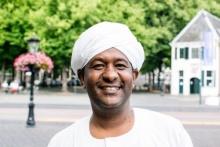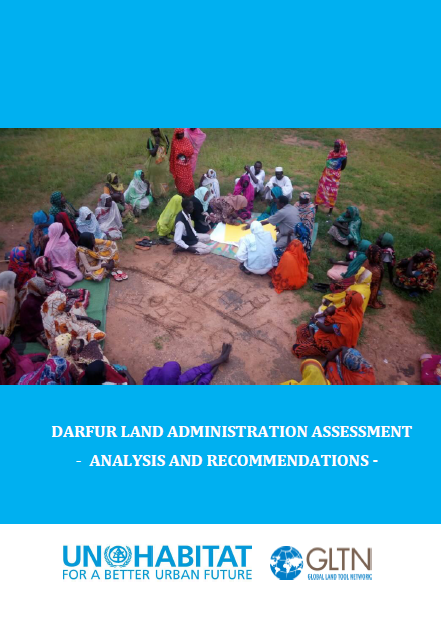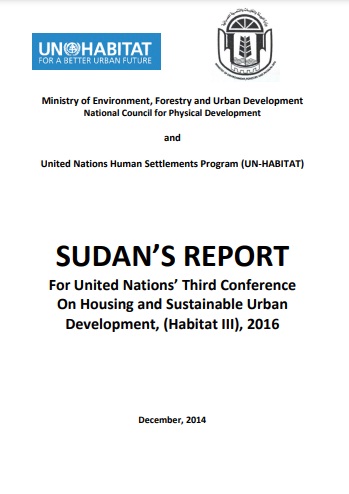
Topics and Regions
Land governance, strategist and mapping specialist has more than twenty years of experience land governance, urban/rural development and land related conflict resolution. Before he initiated the Centre for Land and Environmental Governance in Sudan (ISTIDAMA Centre), where he works as a researcher and lecturer, Salah worked as a Strategy and Quality manager at the Ministry of Physical Planning. He conducted several consultancies and advisory work for several organisations such as: GLTN of UN Habitat, DFID and Arab Land initiative. Salah is an Arabic native speaker, he obtained a master’s degree in International Relations, Geoinformation Science and Earth Observations at the University of Twente and a Bachelor’s degree in Surveying Engineering.
Details
Location
Contributions
Displaying 1 - 10 of 13Cooperativas recebem terras aráveis em Mbanza Kongo
Mulheres militares desafiam homens na produção alimentar
Tanaru, o "índio do buraco" que viveu protegendo a floresta
Tanaru, indígena isolado em imagens feitas em 1996 Foto: Vincent Carelli/Vídeo nas Aldeias
Com a morte do indígena, o destino de sua terra é incerto. Indigenistas temem que ela seja entregue aos algozes de seu povo
Em 2018, cenas inéditas da Funai comprovaram novamente a existência de Tanaru, indígena que ficou conhecido como o "índio do buraco".
Darfur Land Administration Report
The objectives of the report are to assess the statutory and customary land administration systems and practices in the five Darfur states of Sudan, and to provide guidance to relevant stakeholders on how to support the tenure security and housing, land and property (HLP) rights of people voluntarily returning to Darfur and of other vulnerable people, such as IDPs, refugees, women and youth. Although the primary focus of the report is on securing the land rights of returnees, vulnerable and displaced people, the findings and recommendations are relevant to the overall Darfur population.
Conflicts and Conflict Resolution in the Horn of Africa: Toward the Study of Regional Peace and Security
The article attempts to provide an understanding of the phenomenon of conflict in the Horn of Africa. It identifies and dicusses the political factor as the root cause of the problem of peace and security in the subregion. The paper does not argue that thee is a gap of literature on the conflicts in the Horn of Africa. The argument it is trying to present is taht many of the works on the subject taht the author has consulted and reviewed concentrate on conflict markers such as ethnicity, region, religion, etc.
SUDAN’S REPORT For United Nations’ Third Conference On Housing and Sustainable Urban Development, (Habitat III), 2016
The population of Sudan reached 30.9 million people in the last population census (2008), and is
projected to reach 39.7 people by 2016, growing at a 2.8% growth rate per annum. With this rate
of increase the population could double up in in about 16 years.
The urban population constituted about 29.8% of the total 2008 population, which indicates that
Sudan is predominantly rural. This high rate of population increase, and the tendency towards
population concentration in large urban centers, constitutes one of the biggest challenges facing
Promoting the provision of legitimate land tenure rights -Sudan-project
Promoting the provision of legitimate land tenure rights using Voluntary Guidelines on the Responsible Governance of Tenure of Land, Fisheries and Forests (VGGT) in the Context of National Food Security for conflict-displaced communities, including small‐scale rural farmers, pastoralists, and Internally Displaced Persons (IDPs) in the Greater Darfur region of the Sudan
Pastoralism and Conservation in the Sudan
On a global scale, Sudan perhaps ranks first in terms of pastoralists population size. About
66 per cent of Sudan is arid land, which is mainly pastoralists’ habitat. Pastoralism in the
Sudan involves about 20 per cent of the population and accounts for almost 40 per cent of
livestock wealth [Markakis, 1998: 41]. The livestock sector plays an important role in the
economy of the Sudan, accounting for about 20 percent of the GDP, meeting the domestic
demand for meat and about 70 percent of national milk requirements and contributing about
Pastoralism and Conservation in the Sudan
On a global scale, Sudan perhaps ranks first in terms of pastoralists population size. About
66 per cent of Sudan is arid land, which is mainly pastoralists’ habitat. Pastoralism in the
Sudan involves about 20 per cent of the population and accounts for almost 40 per cent of
livestock wealth [Markakis, 1998: 41]. The livestock sector plays an important role in the
economy of the Sudan, accounting for about 20 percent of the GDP, meeting the domestic
demand for meat and about 70 percent of national milk requirements and contributing about
تشريع استرجاع الأراضي (في ليبيا)
قدم هذا التقرير مراجعة قانونية " لمشروع القانون والذى يقوم باقتراح بعض الأحكام بشأن الممتلكات المنقولة للدولة، وذلك بموجب القانون رقم 4 لسنة 7911 (مشروع القانون)"، الذي نشرته وزارة العدل بالحكومة الليبية في مارس 2013م . ولا يعد هذا التقرير مقتصراً على مناقشة مشروع القانون المعنىّ، إذ يسلّط الضوء على القضايا الرئيسة المختصة بأي استرجاع، والذى من شأن القانون أن يعالجه. ويعتمد مشروع القانون في معالجته على أسس العدالة الاجتماعية وأفضل الممارسات الدولية المتعلقة باسترجاع الممتلكات، بما في ذلك التعويض.







